Hydrogen Peroxide For Toenail Fungus: 3 Effective Home Remedies
Understand how to use this oxidative therapy to improve your nail health.
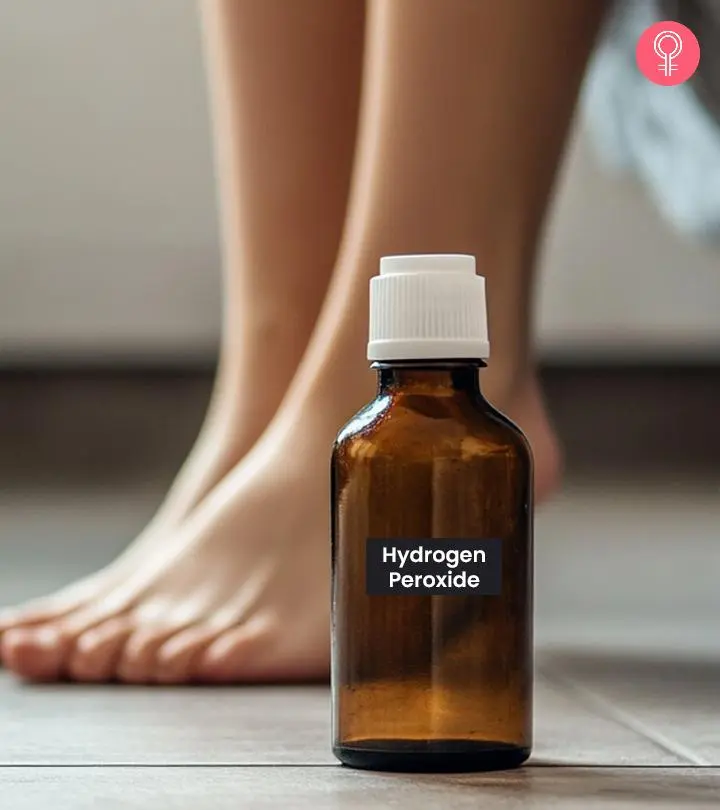
Image: Midjourney/ StyleCraze Design Team
Nail fungus is not an easy task to deal with. Though it appears as a yellow spot, it can spread to your entire nail and may crack it, leading to more tenderness and pain. So, if you want to know what kills toenail fungus instantly, many experts suggest using hydrogen peroxide for nail fungus. They believe that oxidative therapy such as the one with hydrogen peroxide may help prevent nail fungus and save your nail bed from further damage. While this method of oxidative therapy is one of the common home remedies available to manage this condition, it is highly debated. This article discusses more about using hydrogen peroxide to treat nail fungus, its safety, how to use it, and its side effects. Keep reading to know more about it!
 Trivia
TriviaIn This Article
What Causes Nail Fungus
Nail fungus, known as onychomycosis, results from fungal infections affecting the toenails and fingernails. Dermatophytes, yeasts, and molds are the primary fungal culprits (1). They thrive in warm, moist environments such as sweaty shoes. Other ways to get infected are (1):
- Trauma or Injury: Nail injuries provide entry points for fungal infections to establish themselves.
- Poor Nail Hygiene: Inadequate cleaning, trimming, and drying of nails create conditions favorable for fungal growth.
- Warm, Humid Climates: Humid environments increase susceptibility to nail fungus.
- Weakened Immunity: A compromised immune system due to medical conditions or medications may elevate the risk of infection.
- Aging: Diminished blood circulation in extremities in older individuals increases susceptibility.
- Public Spaces: Walking barefoot in public spaces like swimming pools exposes individuals to fungal spores.
Know how hydrogen peroxide can aid in effective management of nail fungus in the next section.
Key Takeaways
- Hydrogen peroxide has several antifungal activities that may help treat and prevent nail fungus.
- This common home remedy can be applied directly to your affected nail, or it can be soaked in a diluted solution.
- It can be used alone or along with other ingredients like bleaching soda or white vinegar. Also, this remedy should be used as per directions to avoid its adverse effects.
Is Hydrogen Peroxide An Effective Treatment For Nail Fungus?
Hydrogen peroxide is a household remedy that is used to disinfect minor scratches and cuts. Many people also suggest using hydrogen peroxide for toenail fungus due to its effectiveness (2).
When used for treating nail fungus, its antifungal properties kill the fungus, letting the damaged part of your nails grow out. The liquid has several uses as an antiseptic, disinfectant, oxidizer, bleaching agent, as well as an antifungal agent (1). Its strong antifungal and antiseptic properties effectively treat nail fungus (2).
However, the effectiveness of hydrogen peroxide for nail fungus is debated. Some experts believe that it may work due to its antifungal properties. The liquid has several uses as an antiseptic, disinfectant, oxidizer, and bleaching agent (3) (4). They are of the view that these properties kill the fungus, letting the damaged part of your nails grow out. With regular use, the treatment may heal your nails within weeks or months, depending on the severity of the infection. It is recommended to keep using the treatment for a couple of months after your nail has been restored back to health to prevent future fungal infections. While there are not a lot of scientific studies on this treatment, it is a tried and tested home remedy. However, the lack of scientific studies also means that hydrogen peroxide is not a guaranteed treatment for nail fungus. Therefore, it is important to consult a doctor before its use.
Dr. Bruce Pinker, a board-certified foot and ankle surgeon, says, “Hydrogen peroxide is ANTISEPTIC, not ANTI FUNGAL. It is utilized to reduce infection. While onychomycosis is considered a toenail infection, an anti fungal is commonly utilized, not an antiseptic. There are many topical anti fungal solutions that can be applied to toenails to reduce onychomycosis. They are recommended for mild cases as they are approximately 50% effective, and only 17% effective for moderate to severe cases. Some of the anti fungal solutions are by prescription, and there are many that are OTC/non-prescription.”
Dr. Anna Chacon, a board-certified dermatologist, says, “Regular use of hydrogen peroxide can show improvement in toenail fungus within a few weeks to months, depending on the spread of the infection.”
Thirty-eight participants in the trial either used Mycosinate or an approved toenail lacquer. A base layer of Mycosinate is a method for prolonged hydrogen peroxide emission. According to the research, Mycosinate is a novel topical treatment for onychomycosis that offers a high rate of efficacy and a superior safety profile.

Mycological Cure Rates
Source: Mycological Cure RatesHere, I’ve put together a comprehensive step-by-step guide on how to use hydrogen peroxide to treat nail fungus.
How To Use Hydrogen Peroxide To Treat Nail Fungus
Note: All the information provided above and the methods given below are for general informational purposes only. They should not be considered a substitute for professional medical advice, diagnosis, or treatment. If you have concerns about your nail health or any underlying medical conditions, please consult a medical professional before starting any treatment.
1. Soak Your Feet In Hydrogen Peroxide
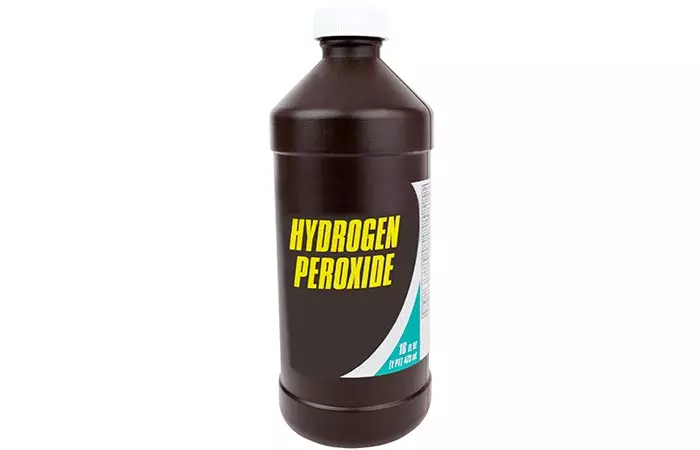
You Will Need
- 3% hydrogen peroxide
- Distilled water
- Plastic tub
- Tissues
Time
30 minutes
Method
- Mix equal parts of the hydrogen peroxide and distilled water in the plastic tub.
- Ensure that you are not using anything stronger than a 3% hydrogen peroxide solution; or it may damage your skin.
- Soak the nails that have been affected by the fungus in this solution.
- Wait for 30 minutes.
- Dry your nails with a dry tissue. Dispose off the tissue after use.
- Ensure that your nails are completely dry before you cover them.
Andrea Jean, a Youtube blogger, used hydrogen peroxide on her feet in a video. She used a foot file to remove the remaining dead cells for soft and healthy feet. She said, “It Is an all-natural remedy if you have athlete’s foot. You’re just going to want to shave off, rub off any of that extra dead skin. The hydrogen peroxide helped loosen it and killed any bacteria (i).”
How Often?
You have to repeat this process every day until, and even after, the problem subsides. Getting rid of nail fungus is not easy and will take a lot of patience and effort.
Why This Works
Hydrogen peroxide is a powerful oxidizing agent (3). Anecdotal evidence suggests that oxidate therapy using it is highly effective when it comes to treating nail fungus. The method involves using the peroxide to soak the infected and affected nails. As the oxygen levels increase, the fungus on your nails may get destroyed. However, there is no scientific evidence backing this claim.
Note: Before applying hydrogen peroxide, do a patch test on a small area of the skin to check for any adverse reactions, especially if you have sensitive skin.
2. Vinegar And Hydrogen Peroxide For Nail Fungus
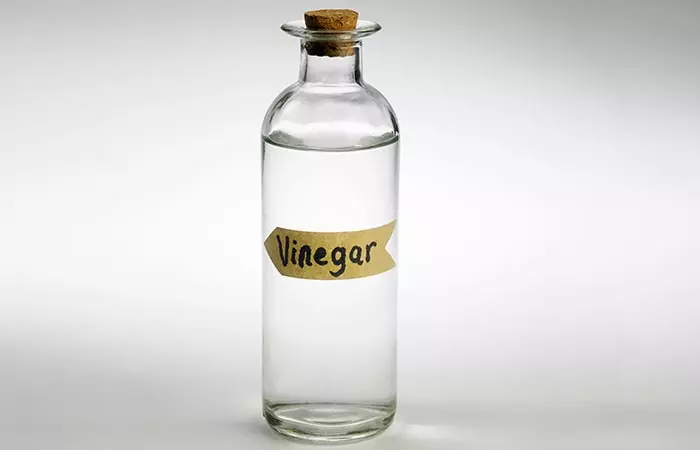
You Will Need
- 3% hydrogen peroxide
- White vinegar/apple cider vinegar
- Distilled water
- Plastic tub
- Tissues
NOTE
While method 1 is often quoted as a solution to nail fungus on the internet, we recommend using method 2. This is because under certain conditions, mixing hydrogen peroxide and vinegar can form peracetic acid, which is a caustic chemical that does not share the desired properties to treat nail fungus (5).
Time
Method 1 – 10 minutes
Method 2 – 30 minutes
Method 1
- Mix equal parts of the hydrogen peroxide, distilled water, and vinegar in the plastic tub.
- Ensure that you are not using anything stronger than a 3% hydrogen peroxide solution; or it may damage your skin.
- Soak the nails that have been affected by the fungus in this solution.
- Wait for 10 minutes.
- Dry your nails with a dry tissue. Dispose of the tissue after use.
- Ensure that your nails are completely dry before you cover them.
Method 2
- Mix equal parts of the hydrogen peroxide and distilled water in the plastic tub.
- Follow the steps mentioned in method one.
- On day 2, follow the same steps using equal amounts of vinegar and distilled water.
- Keep alternating between hydrogen peroxide and vinegar until the problem subsides.
How Often?
You have to repeat this process every day until, and even after, the problem subsides. Getting rid of nail fungus is not easy and will take a lot of patience and effort.
Why This Works
Vinegar is an acidic solution that has antimicrobial and antioxidant properties, making it potentially useful for treating wounds, and bacterial and fungal infections (6). It may help relieve itching and restore the pH balance of your skin and nails (7). Due to this, vinegar may create an unfavorable environment for the fungi to breed in, killing off the infection. Apple cider vinegar, in particular, also has anti-inflammatory properties that may help reduce inflammation, reducing the pain caused by nail fungus (8). It is an effective home remedy for toenail fungus and fingernail infections.
3. Baking Soda And Hydrogen Peroxide For Nail Fungus

You Will Need
- ½ cup baking soda
- 1 cup 3% hydrogen peroxide
- ¼ cup white vinegar
- 4 cups warm water
- ½ cup Epsom salt
- Plastic tub
- Tissues
Time
10 minutes
Method
- Mix the baking soda, peroxide, vinegar, Epsom salt, and water in a plastic tub until they are well combined.
- Ensure that you are not using anything stronger than a 3% hydrogen peroxide solution; or it may damage your skin.
- Soak the nails that have been affected by the fungus in this solution.
- Wait for 10 minutes.
- Dry your nails with a dry tissue. Dispose of the tissue after use.
- Ensure that your nails are completely dry before you cover them.
How Often?
You have to repeat this process every day until, and even after, the problem subsides. Getting rid of nail fungus is not easy and will take a lot of patience and effort.
Why This Works
A study published in the Mycopathologia peer-reviewed journal suggests that sodium bicarbonate, commonly known as baking soda, has antifungal properties. It may help prevent the growth of fungi that cause skin and nail infections. However, the exact way it works to fight fungi is still unknown and needs further research (9). Together with hydrogen peroxide and vinegar, baking soda may help balance your skin’s pH levels while killing off fungus. However, relevant studies are needed to support this claim.
Dr. Anna Chacon recommends saturating your toe in the peroxide for 30 minutes. She also adds, “If you do not see results, please visit your local dermatologist and get prescription treatment for your toenail fungus.”
Additional Tips For Treating And Preventing Nail Fungus

- Wash and disinfect all of your shoes and socks.
- Disinfect your nail clippers with hot water and alcohol.
- Keep your fingers and toes covered when you are outside.
- Keep your nails short and clean.
- Thoroughly dry your nails after washing your hands and feet.
- Spray your gloves and shoes with anti-fungal sprays on a regular basis to kill lingering fungi.
- Always dry your shoes and socks properly. Moisture is your worst enemy as it creates a breeding ground for fungus.
 Trivia
TriviaSide Effects Of Using Hydrogen Peroxide For Nail Fungus Treatment

If you experience any of the following side effects, try using a solution weaker than 2%. You can also try diluting the solution further with water.
- Hydrogen peroxide can irritate your skin causing redness, stinging, and mild itching (10).
- It may also dry out your skin and cause cracked feet.
- In high concentrations, it may cause your skin to peel or cause burns (10).
- If it comes in contact with the eye, it may cause irritation and discomfort. High concentrations of more than 10% may also lead to corneal damage (10).
Apart from hydrogen peroxide, there are numerous other natural treatments that are suggested for nail fungus. Learn about them in the next section.
Alternatives To Using Hydrogen Peroxide For Nail Fungus
Here are some effective alternatives to hydrogen peroxide you can use for nail fungus:
Tea Tree Oil
Tea tree oil has antifungal properties. A study published in The Journal of Family Practice evaluated the effectiveness and tolerability of two topical treatments for toenail nail fungus — a 1% clotrimazole solution and 100% tea tree oil. It found that both treatments resulted in similar levels of improvement in nail appearance and symptoms (11). To use tea tree oil for nail fungus, simply dilute it with a carrier oil like coconut oil and apply it to the affected nail. Ensure to do a patch test before doing so to avoid the risk of allergic reactions.
Oregano Oil
Oregano oil exhibits strong antifungal properties, which may help inhibit fungal growth. Due to this, it may help eradicate nail fungal infections (12). To use the oil, dilute it with carrier oils like coconut or jojoba and apply on the affected area.
Aloe Vera
Aloe vera has wound healing and antifungal properties (13). Due to this, it may help prevent the growth of fungi that cause nail infections. You may either apply fresh or store-bought aloe vera gel directly on the affected area. If you are using the latter, ensure that it is free of artificial additives, fragrances, or alcohol, as these may irritate the skin. For the best results, clean the affected area thoroughly before application and allow the gel to dry naturally. Also, do not forget to perform a patch test to ensure you are not allergic to aloe vera.
If using hydrogen peroxide or other home remedies doesn’t provide relief or if the side effects continue to cause discomfort, it might be a good idea to consult a doctor for further advice.
When To See A Doctor
While hydrogen peroxide can be useful in treating toenail fungus, it is important to consult a healthcare professional if your condition doesn’t improve. If the infection starts to spread, causes significant pain, or shows no progress after several weeks of treatment, it may indicate the need for stronger medication or an underlying medical condition. Moreover, if you have conditions like diabetes or a weakened immune system, it is important to see a doctor to avoid potential complications.
Infographic: Other Remedies You Can Use With Hydrogen Peroxide For Toenail Fungus
The antifungal properties of hydrogen peroxide make it an effective solution for toenail fungus, cuts, and burns. You can mix it with other household remedies like baking soda or vinegar. But, additionally, you can also include over-the-counter treatments to accelerate healing. Learn from the infographic below about the other remedies you can use after treating your feet in the soak.
Some thing wrong with infographic shortcode. please verify shortcode syntax
Yellowing of nail spots or discoloration of nails may possibly be due to a fungal injection. If not treated early on, it can spread and crack the whole nail causing pain and discomfort. While OTC antifungal creams can help, you can try hydrogen peroxide for nail fungus to give you that initial relief. It acts as an antiseptic and antifungal treatment and helps contain the infection. Soaking your feet in a dilution of hydrogen peroxide for 30 minutes every day can result in a visible difference in a few weeks’ time. You may also use vinegar or baking soda as detailed above to enhance its antifungal benefits further. However, if this does not help in alleviating the pain and symptoms, you are advised to consult a podiatrist.
Frequently Asked Questions
Can I use hydrogen peroxide on my nails daily?
Yes, you can use hydrogen peroxide on your nails daily, but it is important to be cautious. While it may help treat nail fungus, using it too often or in high concentrations can dry out your nails and skin. It is best to start with a diluted solution and monitor how your nails respond. If you notice irritation, reduce the frequency or stop using it and consult a doctor.
Is it safe to mix hydrogen peroxide with other treatments?
Mixing hydrogen peroxide with other treatments should be done with care. Some combinations may cause irritation or reduce effectiveness. Before combining hydrogen peroxide with other remedies, it is a good idea to consult with a healthcare provider or dermatologist to ensure it is safe and won’t cause adverse reactions.
How long does hydrogen peroxide take to cure nail fungus?
Depending on the severity of the condition, it may take anywhere between a few weeks to several months of regular treatment with hydrogen peroxide to cure nail fungus.
How long does it take baking soda to kill toenail fungus?
It may take baking soda a few weeks to improve the condition of the toenail. However, using baking soda to treat toenail fungus is not scientifically proven.
What is the fastest way to cure toenail fungus?
Oral antifungal drugs are the fastest way to cure toenail fungus.
How do I know if my toenail fungus is dying?
Diminishing discolored areas on the nail, reduction in the thickness of the nail, new healthy nail growth from the base of the nail, and a clear demarcation line between the old infected nail and the new growth are some signs that the toenail fungus is dying and your nail is healing.
What happens to untreated toenail fungus?
Untreated toenail fungus may cause serious damage to your nail, widespread infection, and foot pain.
You can deal with your nail fungus problem using hydrogen peroxide. Watch this video to learn how long it takes to work and tips on how to use it safely and effectively.
Personal Experience: Source
StyleCraze's articles are interwoven with authentic personal narratives that provide depth and resonance to our content. Below are the sources of the personal accounts referenced in this article.
i. Put Hydrogen Peroxide on your FEET & SEE WHAT HAPPENS! 💥 (this is cool and surprising)https://www.youtube.com/watch?v=WHNOFMQAyz8
References
Articles on StyleCraze are backed by verified information from peer-reviewed and academic research papers, reputed organizations, research institutions, and medical associations to ensure accuracy and relevance. Read our editorial policy to learn more.
- Onychomycosis: Pathogenesis, diagnosis, and management
https://pmc.ncbi.nlm.nih.gov/articles/PMC88888/ - Antiseptics and Disinfectants: Activity, Action, and Resistance
https://pmc.ncbi.nlm.nih.gov/articles/PMC88911/ - Hydrogen peroxide
https://pubchem.ncbi.nlm.nih.gov/compound/hydrogen_peroxide - Antiseptics and disinfectants: Activity, action, and resistance
https://pmc.ncbi.nlm.nih.gov/articles/PMC88911/ - Peracetic acid
https://pubchem.ncbi.nlm.nih.gov/compound/Peracetic-Acid - Acetic acid and the skin: a review of vinegar in dermatology
https://pubmed.ncbi.nlm.nih.gov/34350993/ - Home remedies in dermatology
https://pmc.ncbi.nlm.nih.gov/articles/PMC10718121/ - Exploring the bioactive compounds in some apple vinegar samples and their biological activities
https://pmc.ncbi.nlm.nih.gov/articles/PMC10675503/ - Antifungal activity of sodium bicarbonate against fungal agents causing superficial infections
https://pubmed.ncbi.nlm.nih.gov/22991095/ - Hydrogen peroxide poisoning
https://pubmed.ncbi.nlm.nih.gov/15298493/ - Comparison of two topical preparations for the treatment of onychomycosis: Melaleuca alternifolia (tea tree) oil and clotrimazole
https://pubmed.ncbi.nlm.nih.gov/8195735/ - Antifungal activities of origanum oil against Candida albicans
https://pubmed.ncbi.nlm.nih.gov/11855736/ - Pharmacological update properties of aloe vera and its major active constituents
https://pubmed.ncbi.nlm.nih.gov/3286692/
Read full bio of Dr. Hari Hara Sudhan
- Dr. Bruce Pinker is a foot and ankle surgeon who is board certified by the American Board of Podiatric Medicine. He is a graduate of the New York College of Podiatric Medicine in New York City.Dr. Pinker started his career at the highly respected Binghamton University (State University of New York). It was here that he developed an appreciation for the human body and its foundation, the feet. After graduating, he completed two residency programs at St. Barnabas Hospital in New York. He later trained at the esteemed Hahnemann University Hospital as well as St. Joseph’s Hospital where he became the Chief Resident and led the podiatric surgical team.He also is a Teaching Faculty Member of the Wyckoff Heights Medical Center Podiatric Surgical Residency Program, in Brooklyn. In 2019, he was awarded the honor of membership in the highly regarded publication: Who’s Who in America.His company, Dr. D-LuCS: Doctor Designed Luxury Custom Shoes, combines fashion and function and helps his customers look and feel great.
 Dr. Bruce Pinker is a foot and ankle surgeon who is board certified by the American Board of Podiatric Medicine. He is a graduate of the New York College of Podiatric Medicine in New York City.Dr. Pinker started his career at the highly respected Binghamton University (State University of New York). It was here that he developed an appreciation for the human body and its foundation, the feet. After graduating, he completed two residency programs at St. Barnabas Hospital in New York. He later trained at the esteemed Hahnemann University Hospital as well as St. Joseph’s Hospital where he became the Chief Resident and led the podiatric surgical team.He also is a Teaching Faculty Member of the Wyckoff Heights Medical Center Podiatric Surgical Residency Program, in Brooklyn. In 2019, he was awarded the honor of membership in the highly regarded publication: Who’s Who in America.His company, Dr. D-LuCS: Doctor Designed Luxury Custom Shoes, combines fashion and function and helps his customers look and feel great.
Dr. Bruce Pinker is a foot and ankle surgeon who is board certified by the American Board of Podiatric Medicine. He is a graduate of the New York College of Podiatric Medicine in New York City.Dr. Pinker started his career at the highly respected Binghamton University (State University of New York). It was here that he developed an appreciation for the human body and its foundation, the feet. After graduating, he completed two residency programs at St. Barnabas Hospital in New York. He later trained at the esteemed Hahnemann University Hospital as well as St. Joseph’s Hospital where he became the Chief Resident and led the podiatric surgical team.He also is a Teaching Faculty Member of the Wyckoff Heights Medical Center Podiatric Surgical Residency Program, in Brooklyn. In 2019, he was awarded the honor of membership in the highly regarded publication: Who’s Who in America.His company, Dr. D-LuCS: Doctor Designed Luxury Custom Shoes, combines fashion and function and helps his customers look and feel great. - Dr. Anna Chacon, MD, FAAD, is a double board-certified dermatologist with over 7 years of experience. She has authored many peer-reviewed articles and managed clinical research studies during her fellowship. She completed her medical school in the PLME (Program of Liberal Medical Education) at Brown University.
 Dr. Anna Chacon, MD, FAAD, is a double board-certified dermatologist with over 7 years of experience. She has authored many peer-reviewed articles and managed clinical research studies during her fellowship. She completed her medical school in the PLME (Program of Liberal Medical Education) at Brown University.
Dr. Anna Chacon, MD, FAAD, is a double board-certified dermatologist with over 7 years of experience. She has authored many peer-reviewed articles and managed clinical research studies during her fellowship. She completed her medical school in the PLME (Program of Liberal Medical Education) at Brown University.
Read full bio of Arshiya Syeda
Read full bio of Ramona Sinha
Read full bio of Shiboli Chakraborti







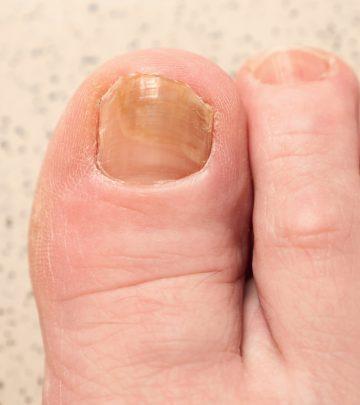
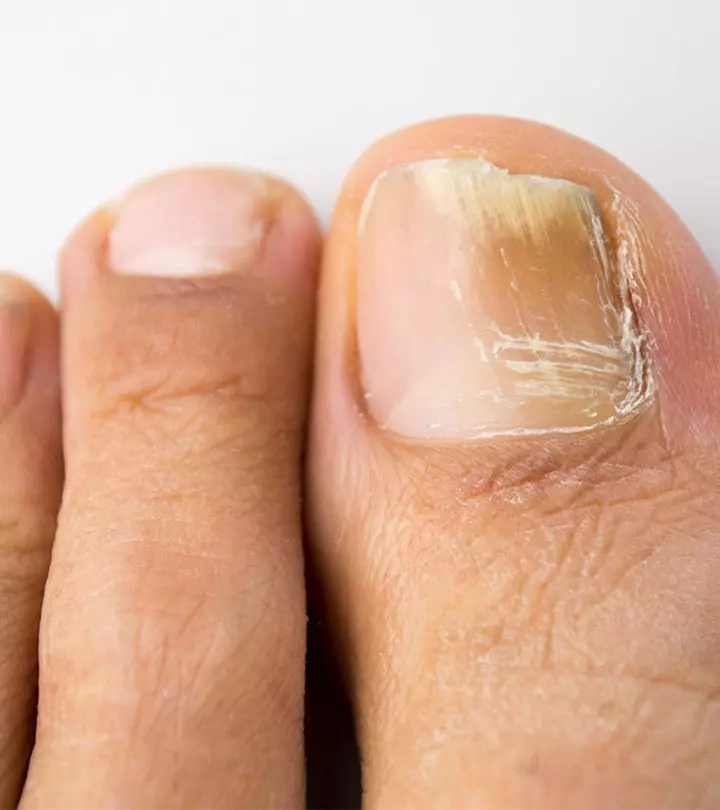
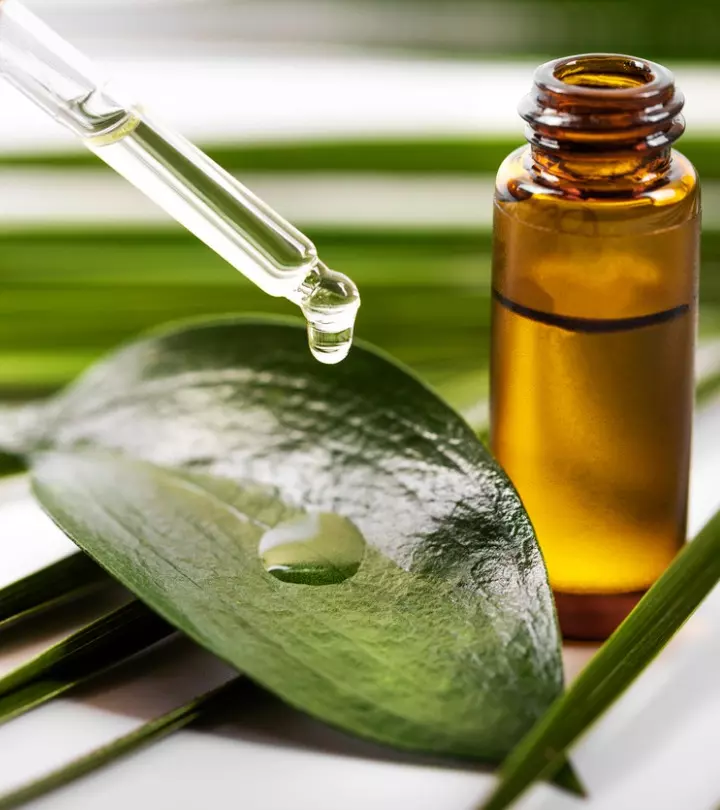

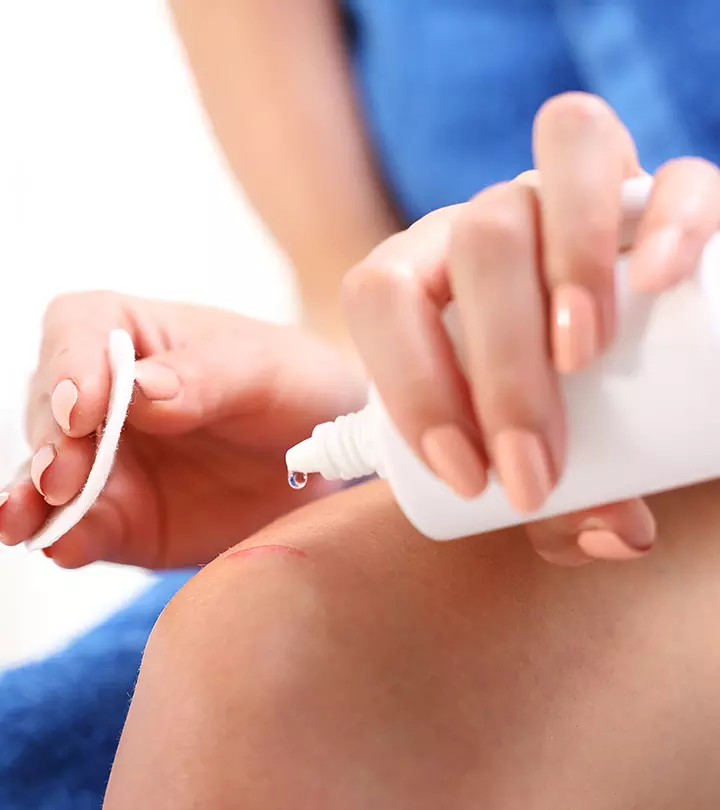

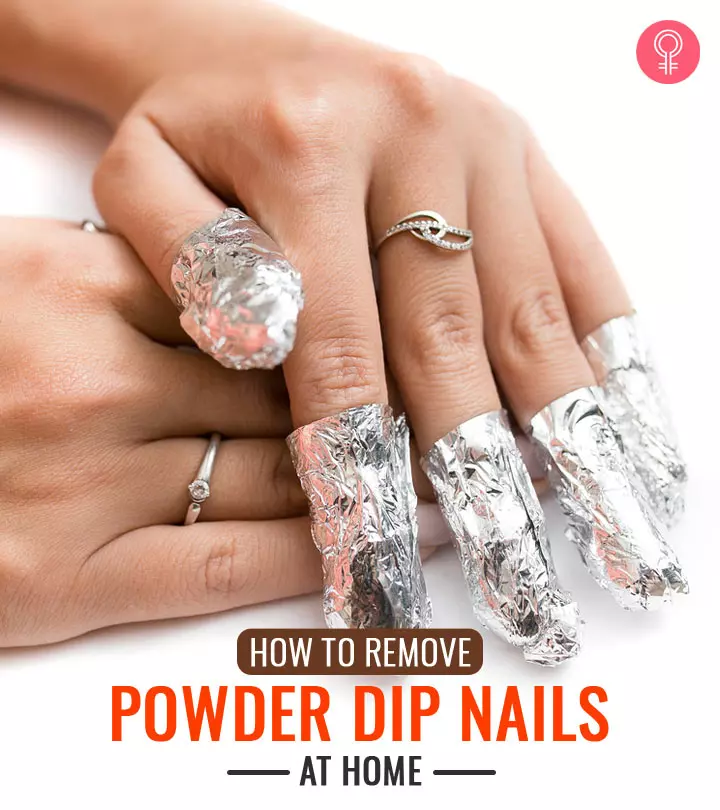
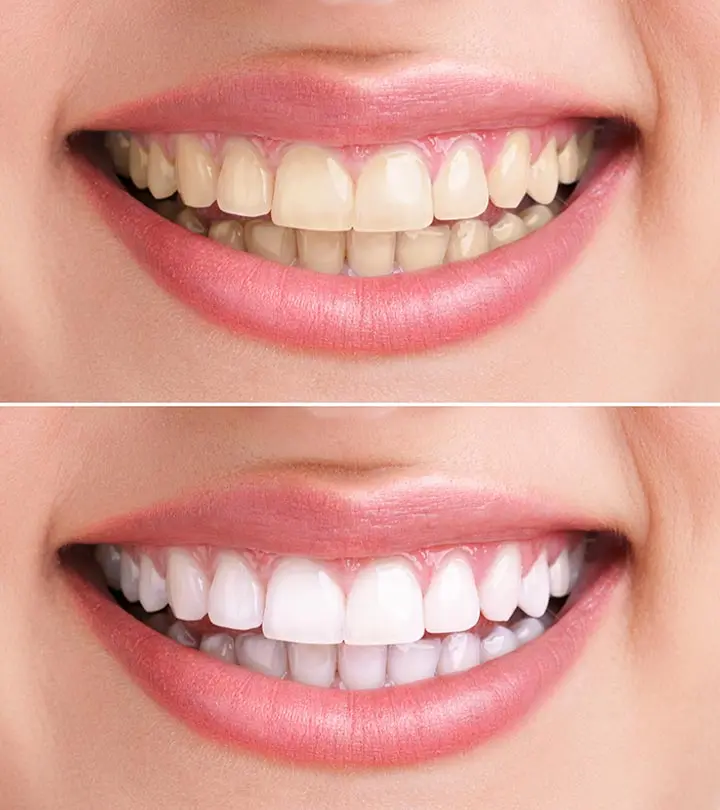













Community Experiences
Join the conversation and become a part of our empowering community! Share your stories, experiences, and insights to connect with other beauty, lifestyle, and health enthusiasts.